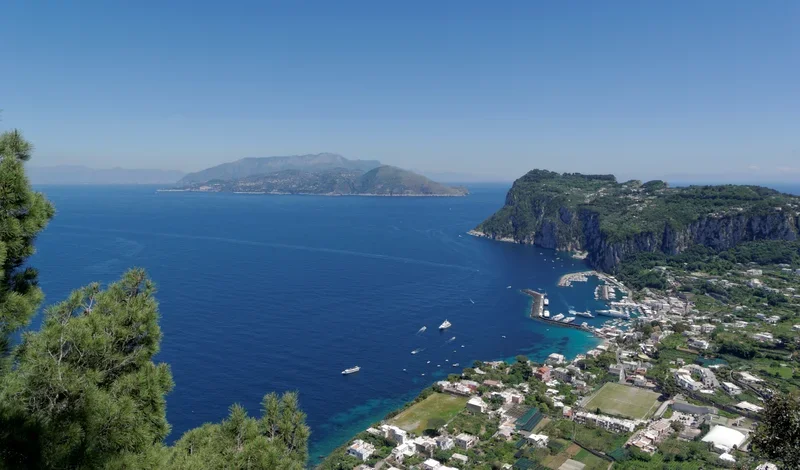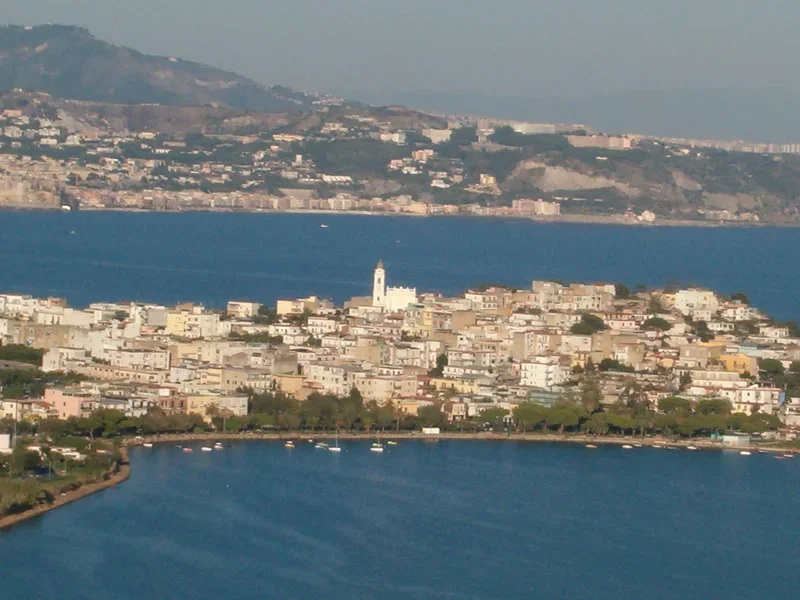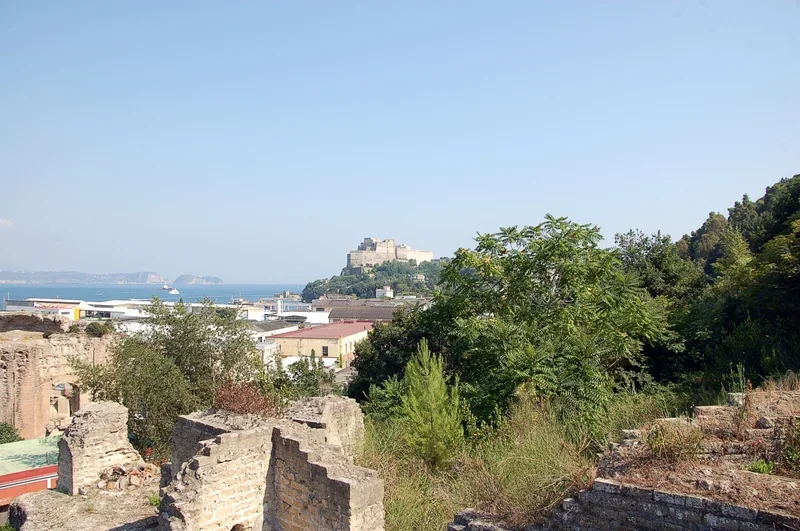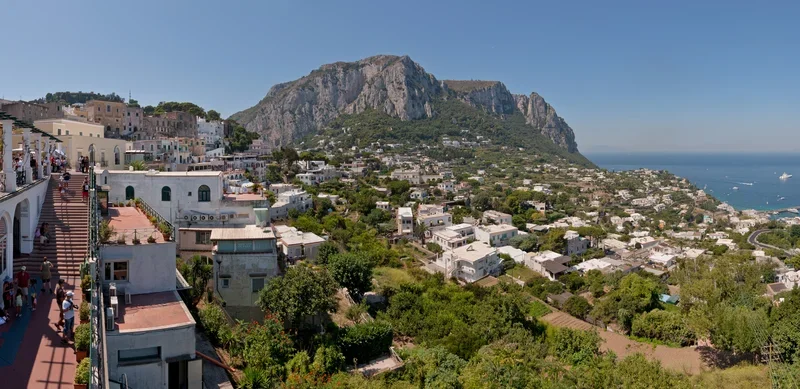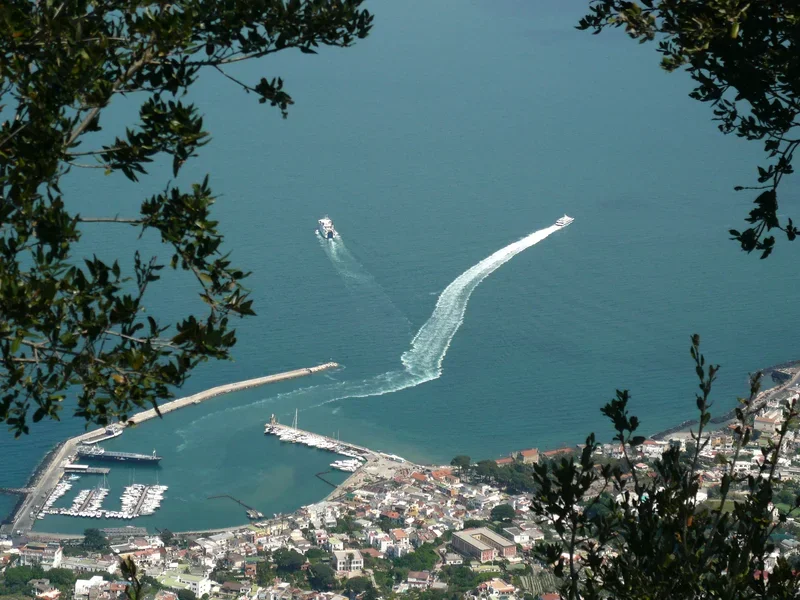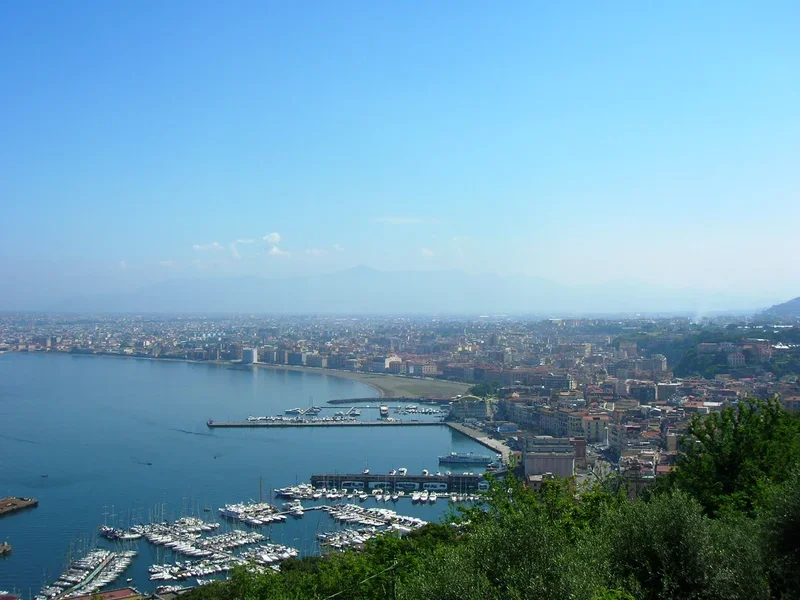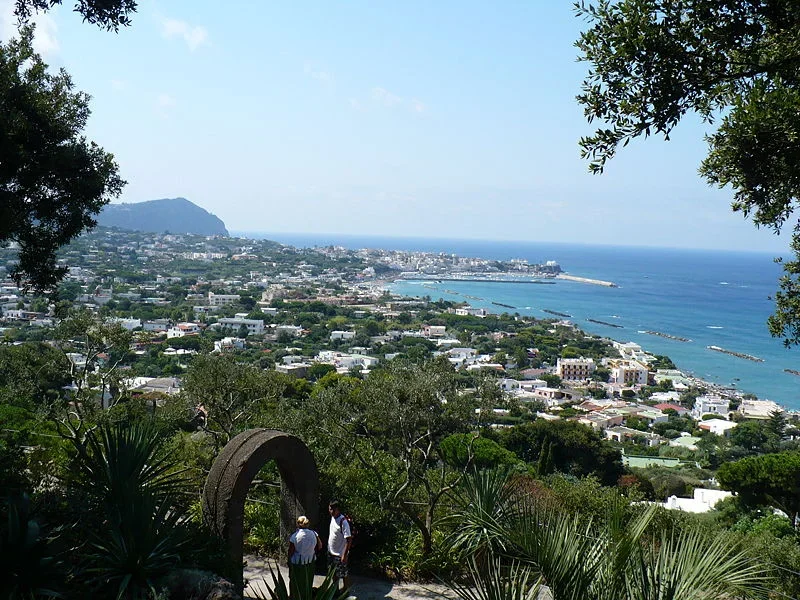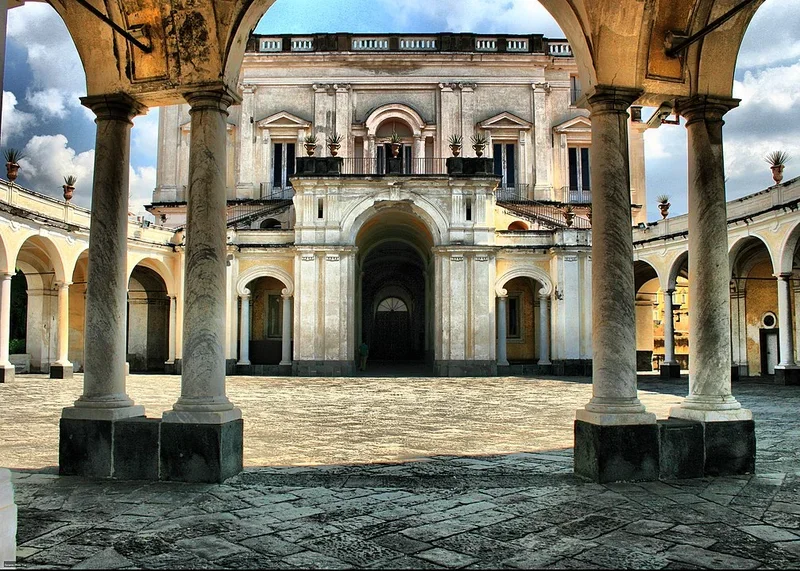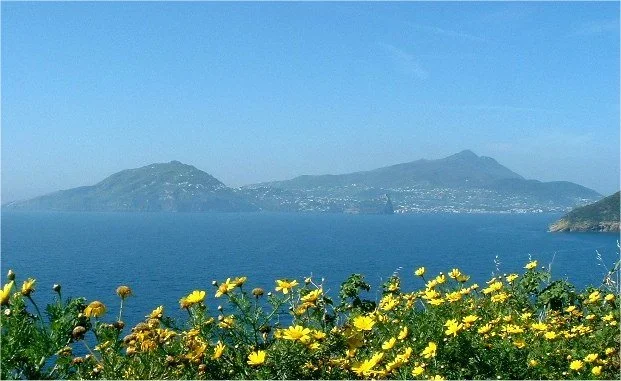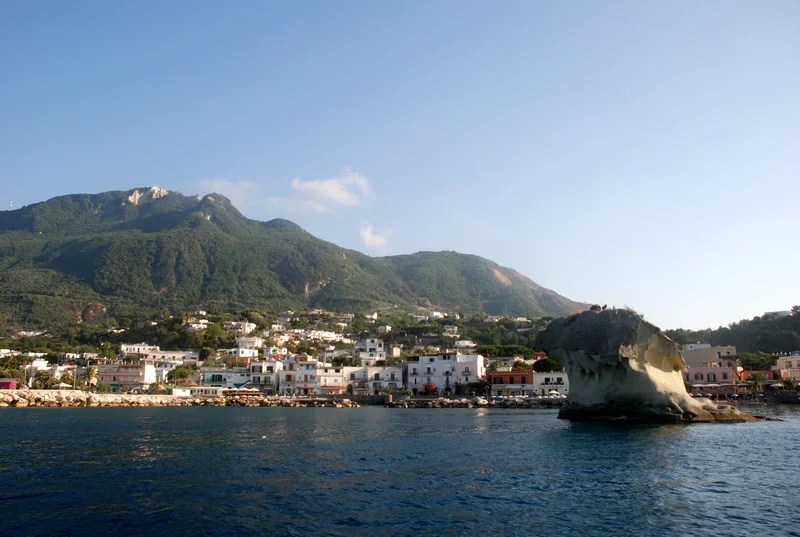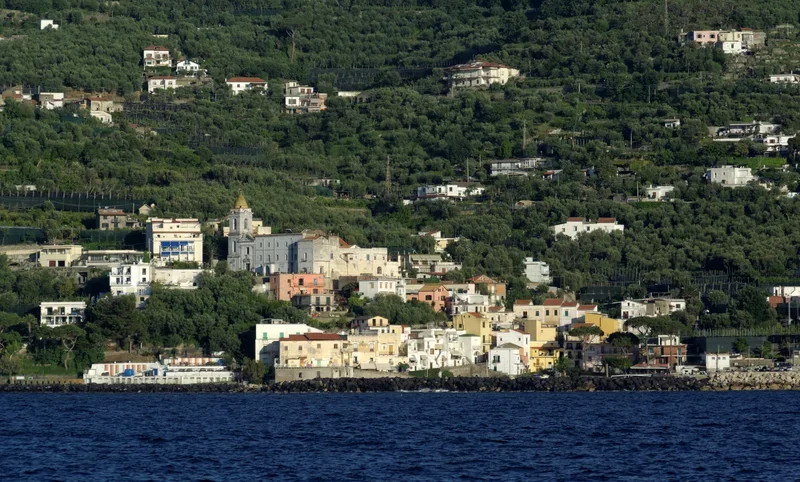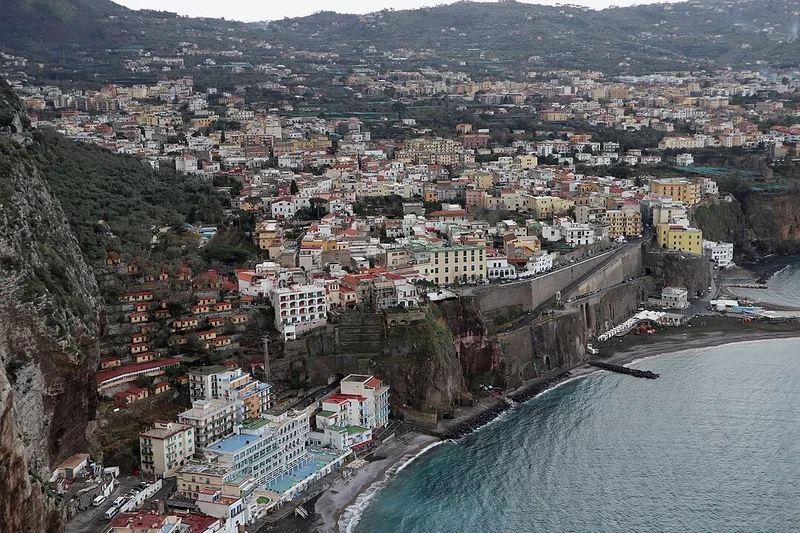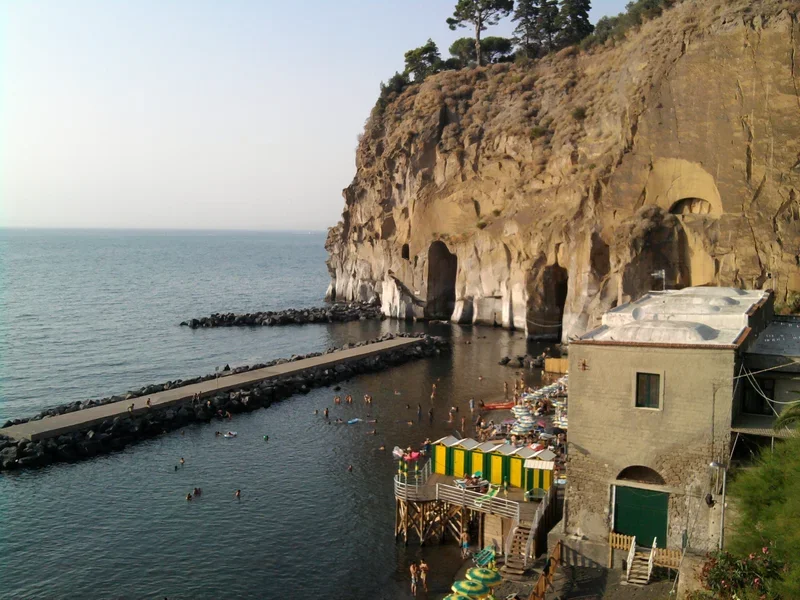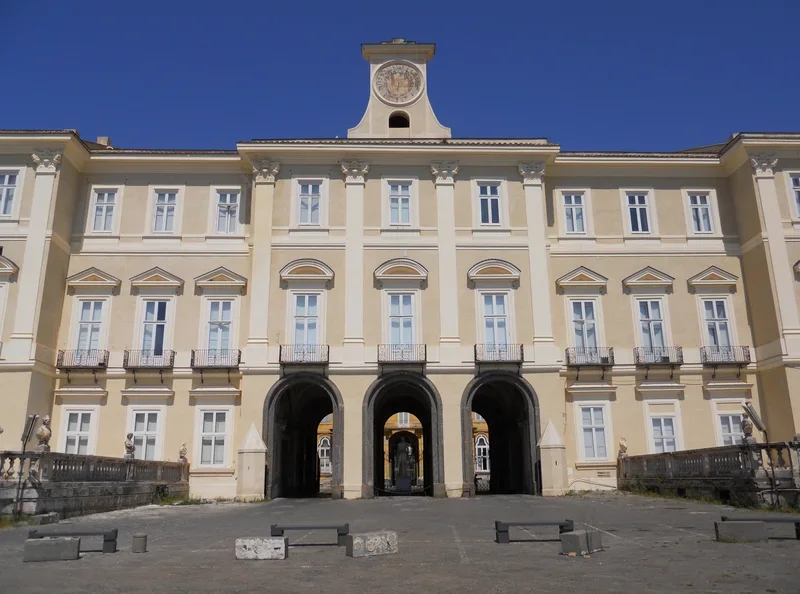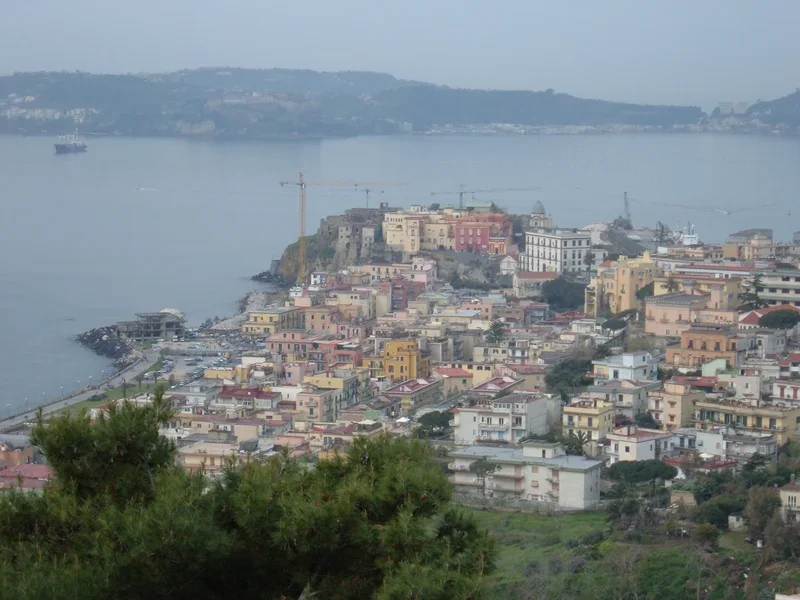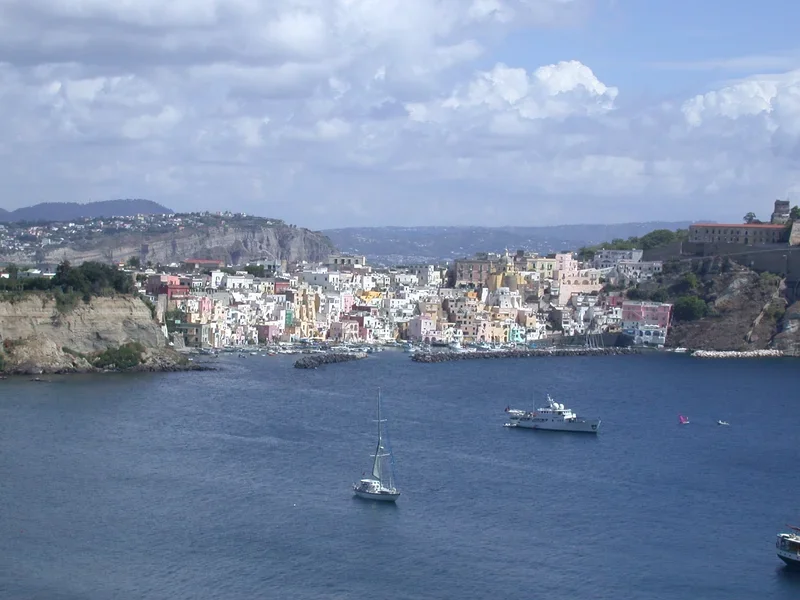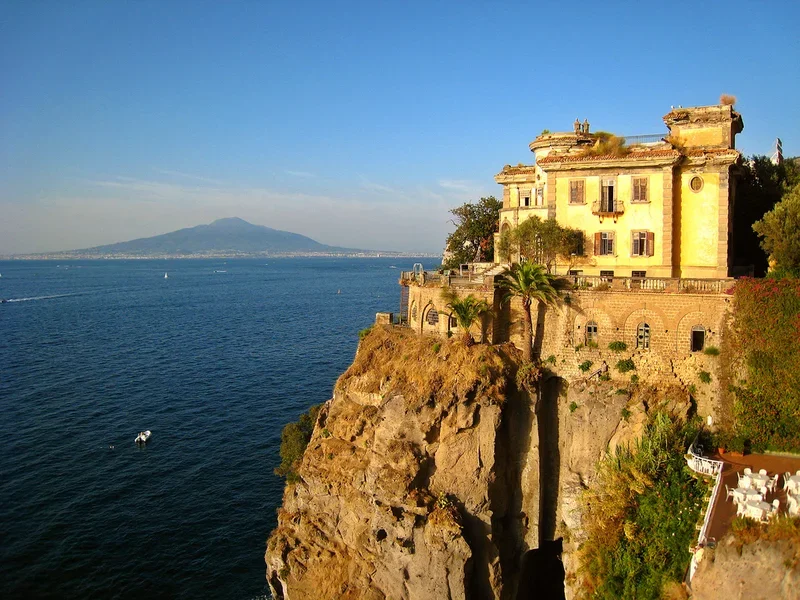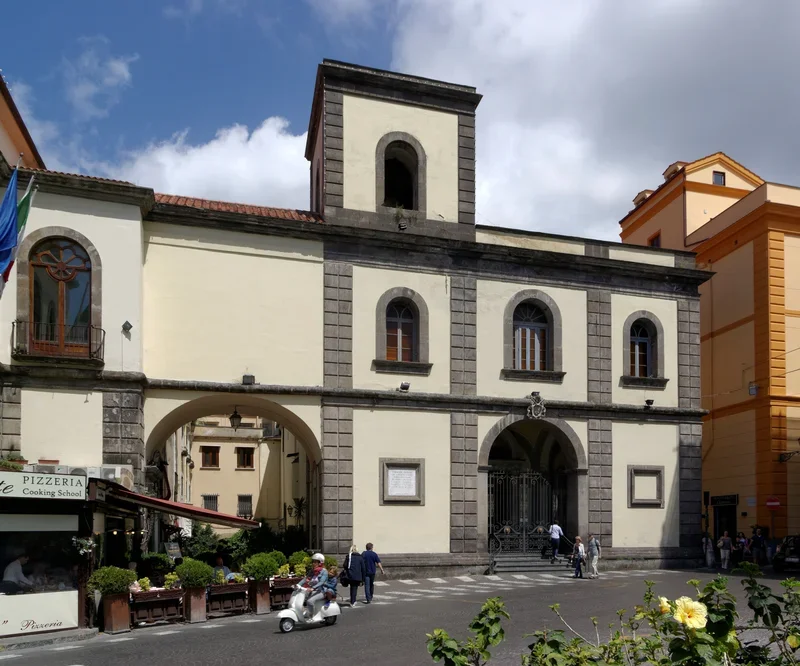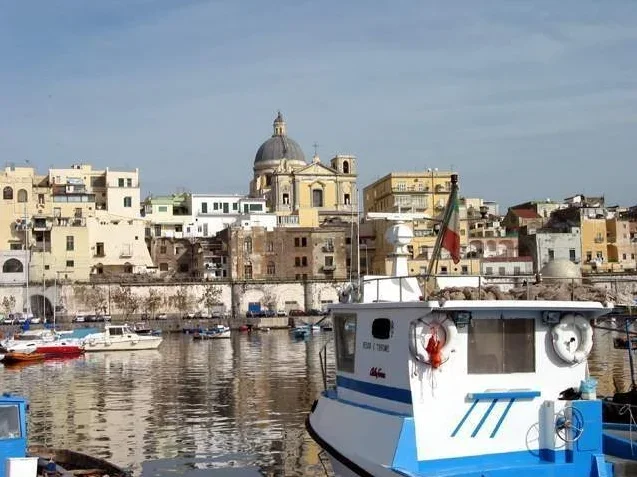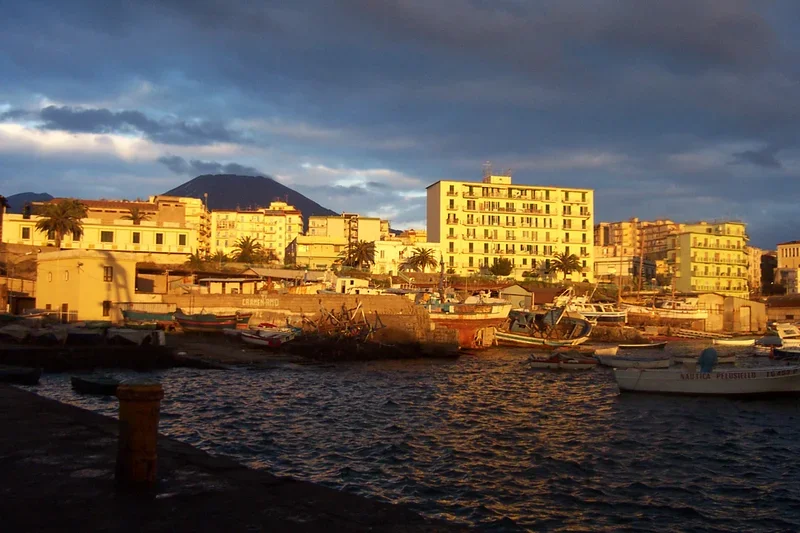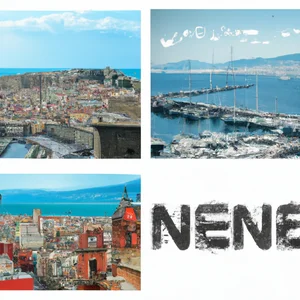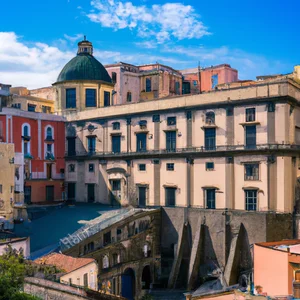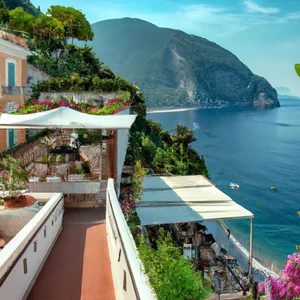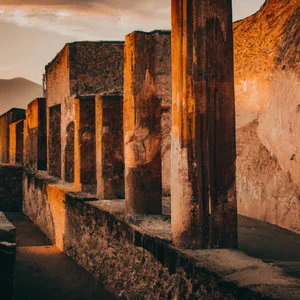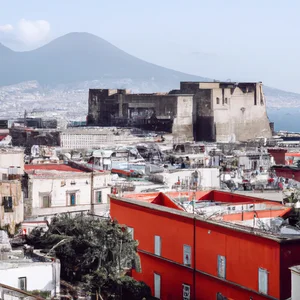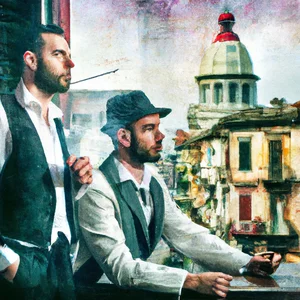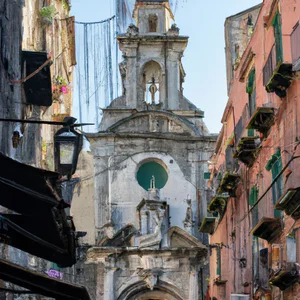Book your experience
Discover the origins of the Santa Lucia district in Naples: between poverty and nobility
The Santa Lucia district, nestled between the sea and the majestic Castel dell’Ovo, is one of the most fascinating and history-rich areas of Naples. This area, which has seen the succession of different eras and styles, tells a complex story, made up of contrasts and interactions between nobility and people. Its origins are rooted in a distant past, when the area began to develop as a center of social and cultural life. In this article, we aim to explore the origins of the Santa Lucia district, analyzing the ten aspects that have marked its evolution over time.
From the foundation of the district, which dates back to ancient historical periods, to the strong bond with the Neapolitan nobility, we will discover how Santa Lucia has become a crossroads of stories, in which the daily life of its inhabitants is intertwined with the historical events that have shaped the city . We will go through the Middle Ages, an era of great turmoil, up to the Renaissance, a period of urban and cultural transformation that left an indelible mark on the urban fabric.
However, we will not fail to face the decline and poverty that hit the district in the 19th century, followed by a cultural rebirth that brought popular and religious traditions back to light. The historic architecture of Saint Lucia, with its buildings that tell stories from different eras, will be another focal point of our analysis. Finally, we will focus on the importance of Santa Lucia in literature and art, and then turn our gaze to the present, where the district continues to experience a fascinating mix of history and modernity. A journey that not only illuminates the past, but also invites us to reflect on the future of this extraordinary corner of Naples.
The foundation of the Santa Lucia district
The Santa Lucia district in Naples has an ancient and fascinating history that dates back to medieval times. Its foundation is linked to the construction of a small church dedicated to Saint Lucia, the patron saint of the blind and widows. Legend has it that the church was built by fishermen who, during a storm at sea, invoked the saint's help and promised to build a place of worship in her honor if they were saved.
The church of Santa Lucia then became the center around which the district developed, which was initially inhabited mainly by fishermen and sailors. Over the centuries, the neighborhood has transformed and expanded, while maintaining intact its link with the figure of Saint Lucia, venerated by Neapolitans as the protector of sight and light.
The Santa Lucia district still retains the charm of the past, with its narrow and winding streets, small artisan shops and characteristic historic buildings that tell its long history. Visiting Santa Lucia means immersing yourself in a unique atmosphere, where the past merges with the present in a mix of tradition and modernity.
The link with the Neapolitan nobility
Origins and development
The Santa Lucia district in Naples has always had a strong connection with the Neapolitan nobility since its origins. During the medieval period, many noble families chose to settle in this neighborhood due to its strategic position near the sea and the presence of luxury and comfort. The Neapolitan nobility contributed significantly to the growth and development of Santa Lucia, influencing the architecture, culture and daily life of the district.
Influence on culture and art
The presence of the Neapolitan nobility in Santa Lucia left an indelible mark on the culture and art of the district. The noble families were patrons of the arts and literature, contributing to the creation of works of art and the diffusion of culture in the neighborhood. The noble homes were real cultural centers, where parties, events and shows were held which attracted artists, poets and musicians.
Links with politics and economics
The Neapolitan nobility in Santa Lucia also had close ties to the city's politics and economy. Many noble families were involved in the political and administrative decisions of the Kingdom of Naples, influencing the choices and policies of the period. Furthermore, the Neapolitan nobility often owned land and real estate in the district, contributing to the economic growth and urban development of Santa Lucia.
Daily life in the Santa Lucia district during the Middle Ages
The Santa Lucia district in Naples during the medieval period represented one of the liveliest and most populated neighborhoods of the city.
The streets were narrow and winding, with crowded and often haphazardly built houses. The population was mainly made up of fishermen, artisans and traders, who lived in conditions of poverty but also of great solidarity with each other. The main activities were linked to the sea, with fishing representing the main means of livelihood for many families.
The homes were often built simply, with poor materials and without many comforts. The families lived in small, shared spaces, but the solidarity between the neighbors was very strong and a sort of united and cohesive community was created.
Daily life in the Santa Lucia district during the Middle Ages was characterized by great vitality and the constant presence of people who moved through the streets, worked in artisan workshops or met in common meeting places such as taverns or squares. The presence of the Church was very strong and religion played an important role in people's lives, with holidays and religious celebrations that animated the neighborhood.
In this context, solidarity between residents was fundamental to face the difficulties of daily life and to cope with the adversities that arose. Despite the conditions of poverty and difficulties, the district of Santa Lucia during the Middle Ages represented a lively and pulsating place, where the community rallied around its traditions and shared values.
Urban transformation in the Renaissance
The Santa Lucia district, like much of the city of Naples, underwent significant transformations during the Renaissance period. This historical period brought important changes in the architectural and urban aspect of the neighborhood, influenced by the culture and artistic trends of the time.
One of the main changes that occurred during the Renaissance concerns the expansion of the city towards the sea, with the construction of new streets and buildings that modified the urban fabric of Santa Lucia. In this period, numerous Renaissance buildings were built that still characterize the neighborhood today, such as the Church of Santa Lucia a Mare and Palazzo Donn'Anna.
The new Renaissance architecture is characterized by the search for harmony and symmetry, with decorative elements inspired by classical art. The noble palaces of the Santa Lucia district were enriched with elegant facades and internal courtyards decorated with frescoes and statues, a symbol of the prestige and power of the Neapolitan nobility of the time.
The urban transformation in the Renaissance also led to the redevelopment of public spaces and the enrichment of the artistic and cultural heritage of the neighborhood. Saint Lucia became a pole of attraction for artists and intellectuals, contributing to the diffusion of new Renaissance ideas and the creation of works of art of great value.
In conclusion, the Renaissance period left an indelible mark on the Santa Lucia district, transforming it into a place rich in history, art and culture that still fascinates and amazes visitors today. The Renaissance architecture, works of art and cultural traditions of the neighborhood are witnesses of an era of great splendor and profound change that contributed to shaping the identity of Naples.
The decline and poverty in the 19th century
The 19th century was a period of profound decline and misery for the Santa Lucia district of Naples. During this period, the city was hit by serious economic and social crises, which had a devastating impact on the population of the neighborhood.
The living conditions in the neighborhood were extremely precarious, with many families forced to live in conditions of extreme poverty. Homes were often overcrowded and lacked adequate sanitation, leading to widespread health problems and infectious diseases.
The lack of work and poor economic opportunities further contributed to the poverty of the population of Saint Lucia. Many inhabitants of the neighborhood were forced to live on their wits and public subsidies, while others dedicated themselves to illegal activities to survive.
The deterioration of the social and economic conditions of the Santa Lucia district also had an impact on crime, with an increase in cases of violence and organized crime in the neighborhood. The presence of criminal gangs and criminals contributed to making daily life even more dangerous for the residents of the neighborhood.
Furthermore, the 19th century also saw the destruction of many of the district's ancient structures, due to natural disasters such as earthquakes and volcanic eruptions, as well as urban expansion and the modernization of the city. These events further contributed to the decline of the neighborhood and the loss of its historical identity.
The cultural rebirth of the neighborhood
The Santa Lucia district has experienced a period of cultural rebirth in recent decades, thanks to the commitment of residents and local associations who have dedicated themselves to enhancing the historical and artistic heritage of the neighborhood.
The streets of Santa Lucia have been animated by cultural events, art exhibitions, concerts and theatrical performances which have contributed to bringing life and vitality back to the district. In particular, the Santa Lucia Museum, located in one of the ancient noble homes of the neighborhood, hosts temporary and permanent exhibitions that tell the story and culture of this part of the city.
Popular traditions have been revived and celebrated during religious holidays, such as the feast of Saint Lucia on December 13, which attracts visitors from all over the city to participate in processions and liturgical celebrations.
The ancient artisan shops have been reopened and new commercial activities have come to life, offering typical products and souvenirs linked to local tradition. The restaurants and trattorias in the neighborhood offer Neapolitan cuisine, keeping alive the recipes handed down from generation to generation.
The cultural rebirth of Santa Lucia has also led to the urban redevelopment of the neighborhood, with restoration work on historic buildings and the enhancement of public spaces. The squares and alleys have been repainted and embellished with contemporary works of art, which integrate harmoniously with the historic architecture of the district.
This new vitality has also attracted artists and creatives, who have chosen to settle in Santa Lucia to work and live in an environment rich in history and tradition. The district has thus become a place of meeting and cultural exchange, where past and present, tradition and innovation mix, creating a unique and fascinating mix that makes Santa Lucia a place not to be missed during a visit to Naples.
The historic architecture of Saint Lucia
The Santa Lucia district boasts a rich architectural history, characterized by a mix of styles and influences that reflect the different eras that have marked its evolution over the centuries.
One of the most distinctive elements of the architecture of Santa Lucia is represented by the ancient terraced houses, typical of the medieval era, which still stand today along the narrow paved streets of the district. These homes, often characterized by colorful facades and wrought iron balconies, create a picturesque and charming atmosphere that enchants visitors.
Another historical testimony of great importance is the Church of Santa Lucia, dating back to the 12th century and renovated several times over the centuries. This sacred building features Romanesque architecture, with Baroque and Renaissance influences, and houses priceless works of art inside.
Another characteristic element of the architecture of Santa Lucia are the ancient fortifications that surround the district, dating back to the Renaissance period, which give a defensive and majestic look to the area. These walls, still partly preserved, represent an important historical and cultural heritage for the city of Naples.
Furthermore, along the streets of Santa Lucia it is possible to admire numerous noble palaces, dating back to past centuries, which testify to the district's link with the high Neapolitan nobility. These sumptuous residences, often decorated with frescoes and sculptures, are a symbol of the prestige and wealth of the past.
In conclusion, the historic architecture of Santa Lucia represents a heritage of inestimable artistic and cultural value, which testifies to the richness and complexity of the history of this fascinating district of Naples.
The popular traditions and religious
Religious holidays and celebrations
The Santa Lucia district is rich in popular and religious traditions that date back centuries. One of the most important festivals is the one dedicated to the patron saint of the neighborhood, Santa Lucia, which falls on December 13th. During this festival, the streets of the district are filled with stalls selling typical sweets such as zeppole and Sfogliatelle, while the churches organize processions and masses in honor of the saint. The faithful participate in large numbers in the celebrations, thus demonstrating the strong devotion that binds the community to the cult of Saint Lucia.
Another very heartfelt celebration is that of the Madonna delle Grazie, which is held on July 2nd. During this celebration, a procession takes place which starts from the church of Santa Maria di Costantinopoli and reaches the church of Santa Lucia, where a solemn mass is celebrated to thank the Madonna delle Grazie for the graces received.
Popular traditions
In addition to religious festivals, numerous popular traditions linked to the daily life of the inhabitants are passed down in the Santa Lucia district. One of these is the preparation of minestra maritata, a typical dish of Neapolitan cuisine based on vegetables and meat which is consumed during the Christmas holidays. Another tradition is that of plucking the Sfogliatella, which is held on December 13th on the occasion of the feast of Saint Lucia. During this festival, the fishermen of the neighborhood offer hot farfalle to passers-by, thus symbolizing the generosity and hospitality of the Santa Lucia community.
Saint Lucia in literature and art
The Santa Lucia district in Naples has inspired numerous writers, poets and artists over the centuries. The beauty and evocative atmosphere of this neighborhood have meant that it has become a place full of creative ideas and a source of inspiration for many literary and artistic works.
Among the most famous poets who celebrated Santa Lucia there is certainly Salvatore Di Giacomo, who dedicated several poems to this neighborhood, exalting its beauty and magic. Eduardo De Filippo, a famous Neapolitan playwright, also set some of his plays in Santa Lucia, describing the atmospheres and characters with great skill.
In the realm of art, Saint Lucia has been depicted in numerous paintings and engravings. Artists such as Salvator Rosa and Luca Giordano have immortalized picturesque views of this district with their brushes, capturing daily life and characteristic architecture.
Music also played an important role in interpreting the soul of Saint Lucia. The Neapolitan popular song "Santa Lucia Luntana" is a clear example of how this neighborhood was sung and celebrated through the notes and words of songs and melodies that paid homage to its beauty and history.
In conclusion, Santa Lucia represents a true cultural and artistic heritage for the city of Naples, a place that continues to inspire and enchant anyone who ventures there, be it an occasional visitor or an artist looking for new creative suggestions.

